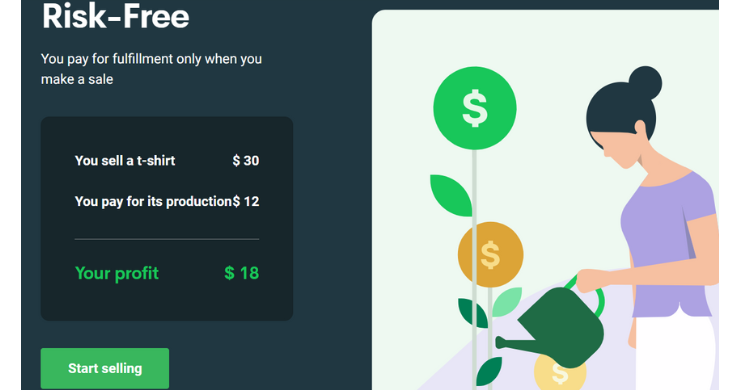
Walmart is recognized as one of the largest retailers and popular places for household shopping. It is renowned for offering the lowest prices and cost savings on various products, making a visit to its physical stores a unique experience.
The success of Walmart is often credited to its extensive distribution strategy, but its marketing mix also contributes significantly to its status as a store accessible to all. In this case study on Walmart’s marketing strategy, we will examine how it became a retail giant with sales volume reaching USD 567 billion.
Walmart Marketplace
Why is it important to distinguish between Walmart and Walmart Marketplace? What sets them apart from each other?
Founded in 1962 by Sam Walton, Walmart is a multinational retail corporation based in the US. With over 10,500 stores in 20 countries, it is now one of the largest retailers globally, surpassing its competitors in the industry. Walmart operates a chain of hypermarkets, discount department stores, and grocery stores.
Walmart introduced Walmart Marketplace in 2009, an online marketplace where third-party sellers can list and sell their products on the Walmart website. This marketplace serves as an extra sales channel for sellers and broadens Walmart’s range of products available to customers. Over time, it has become a leading platform for retailers to market and sell their products.
If you are thinking about selling on Walmart Marketplace, it is crucial to thoroughly assess the advantages and disadvantages. To gain an understanding of why you should or should not select Walmart Marketplace as a platform for selling your products, please consult the provided table.
Advantages
- Wide customer base
- High trust and authority
- Enhanced security
- No regular fees
- Smooth transactions
- Option to use Walmart’s fulfillment services
- Less competition
- No inventory limitations
- Flexible return policy
- Detailed analytic reports
Please rephrase the text below while maintaining the same meaning, thinking step by step. Do not add new information and do not remove information: Considering each aspect methodically, please rephrase the following text, ensuring the meaning remains intact. Please refrain from adding new information, and do not omit any information:
- Limited international reach
- Fixed price requirements
- Lower profit margins
- Potential listing problems
- Complicated registration
When aiming for success on Walmart Marketplace, it is important to carefully consider the advantages and disadvantages to determine if they are in line with your business goals. It is advisable to concentrate on the potential advantages rather than being disheartened by the disadvantages. Additionally, dedicating time to analyzing Walmart’s marketing strategy can assist in comprehending how they have thrived by providing affordable products.
Walmart’s target markets are being considered in a systematic manner, evaluating each step of the thought process.
Walmart caters to a wide range of consumers, encompassing low-income to middle-class households, in its target markets. This customer base comprises of:
- Value-conscious consumers who prioritize low prices and good deals;
- Families looking for a wide range of products, including groceries, household essentials, and clothing;
- Online shoppers who value convenience and home delivery options;
- Small business owners looking for affordable supplies and equipment;
- Rural and suburban communities where Walmart stores are often the most accessible retail option;
- Buyers prefer shopping in one location rather than visiting multiple stores.
Walmart, by comprehending the needs and shopping behavior of this target audience, has adjusted their strategy accordingly.
Walmart’s marketing mix
Walmart’s strategy focuses on helping its customers save money in various product categories through a high-volume sales approach. In order to boost sales and keep prices low, Walmart employs numerous sales promotion tactics on a large scale.
The manner in which Walmart’s marketing mix is shaped is influenced by its cost leadership strategy. Here’s a breakdown of how it operates.
Walmart’s pricing strategy to become the lowest price store
Walmart uses a pricing strategy that is based on inventory management, an efficient supply chain, and a highly customer centric approach to sell its products at lower prices.
Everyday Low Prices (EDLP) involve managing the selling price of goods to ensure a continuous presence of low prices.
EDLC, or everyday low cost, refers to the management of expenditures in a way that allows for the transfer of savings to the Walmart customer.
By employing these tactics, Walmart is able to keep its prices low with the expectation that the combination of increased sales volume and high-value items will result in a profit. Additionally, Walmart’s strategy of offering a diverse range of products allows for everyday low pricing by bundling complementary items together to boost sales.
The efficiency of the supply chain management system is backed by the inclusion of barcodes, the Stock Keeping Unit (SKU) system, and the implementation of a modern distribution strategy.
Walmart’s placement or distribution strategy
Walmart outlet chooses its store location in a way that makes it easily accessible to people. They also strategically position their 150+ distribution centers to facilitate simpler procurement and logistics management.
Walmart is equipped with strong physical presence as well. They include three different store types called Walmart Supercenters, Walmart Discount Stores, and Walmart Express Stores, which are strategically located based on the population density and customer purchase patterns. Additionally, their physical presence is further emphasized by numerous corporate and customer support offices spread across the globe.
In addition to state-of-the-art IT systems, Walmart utilizes strong logistics facilities and a fleet of trucks to track shipments and deliveries, ensuring prompt delivery of goods. Walmart also taps into the online shopping space through its powerful e-commerce platform, in addition to managing an intensive supply chain for in-store experience.
Walmart’s sales promotions marketing strategy
Walmart employs a vast marketing strategy that encompasses extensive use of both Point of Purchase (POP Marketing Strategy) and Point of Sale (POS Marketing Strategy) tactics, with the aim of encouraging customers to make additional purchases while shopping.
Apart from that, traditional marketing tactics such as TV commercials, billboard advertisements, press releases, and public relations make up a considerable portion of Walmart’s marketing budget.
Throughout the year, Walmart provides various promotions such as package deals, discounts, and freebies. In order to enhance the customer’s purchasing experience, they employ personal selling techniques in their stores. These techniques include guiding customers, providing product samples, trial options, and more.
Walmart utilizes slogans, such as their well-known tagline ‘save money, live better’, as part of their brand strategy. Additionally, banners and displays that promote the idea of ‘low prices’ serve to further incentivize customers towards impulsive buying.
Walmart’s product strategy
Walmart’s ability to control the customer experience is limited when it comes to the products available for sale in its online and physical stores. However, one aspect that Walmart has complete control over is the training of its store employees. This training ensures that employees are capable of assisting customers in finding and obtaining the items they need.
Walmart ensures that their store only includes selected products, ensuring there are multiple options for each category. They also need to follow their pricing strategies and quality assessments. By purchasing these products in bulk, Walmart takes advantage of economies of scale.
Similar to Amazon, they also market and sell products under their own Walmart brand in order to enhance their profit margins.
4 Tips to drive more sales on Walmart marketplace
If you are a seller who wants to expand your business on Walmart’s online marketplace, there are several tips available that can aid you in boosting sales and enhancing revenue.
1. Focus on brand reputation
Walmart gives priority to advertising products online from well-known brands with high ratings when choosing bestsellers. This highlights the significance of e-sellers establishing a strong brand reputation in order to succeed on the platform.
E-sellers aiming to be featured on the top page of Walmare should prioritize the provision of high-quality products, efficient fulfillment, excellent customer service, and the maintenance of positive feedback ratings.
2. Provide excellent customer service
Walmart’s focus on customer satisfaction can have a direct influence on e-sellers using the platform. Sellers have a greater opportunity to enhance the rankings and sales of their products as the number of positive customer reviews increases. While it is uncertain if Walmart considers reviews, it cannot be denied that customers depend on reviews when making purchases.
As a result, it is important for sellers to aim for outstanding customer support and also monitor metrics like customer rating, product shipping rates, rates of product cancellation or return, and other key performance indicators that can influence their overall success on the Walmart marketplace.
3. Don’t run low on inventory
In cases where e-sellers provide the lowest prices, the absence of available products can swiftly lead potential buyers to seek alternatives, reducing the probability of securing the Buy Box. Thus, it is essential for e-sellers to keep a close watch on their inventory levels and refrain from experiencing stockouts.
To increase their chances of securing a place in Walmart Marketplace’s Buy Box and growing their overall sales, e-sellers using Fulfillment by Walmart should monitor suppliers closely and ensure timely delivery of products to the Walmart eCommerce Fulfillment Center.
4. Leverage Walmart’s lack of fees
In contrast to Amazon, sellers are not burdened with multiple fees on Walmart. Instead, they are only required to pay referral fees. Consequently, e-sellers can utilize the money saved to invest in various aspects like providing free shipping, expanding their inventory, or conducting promotions. By utilizing these savings, e-sellers are able to enhance their overall business performance on Walmart’s online marketplace.


